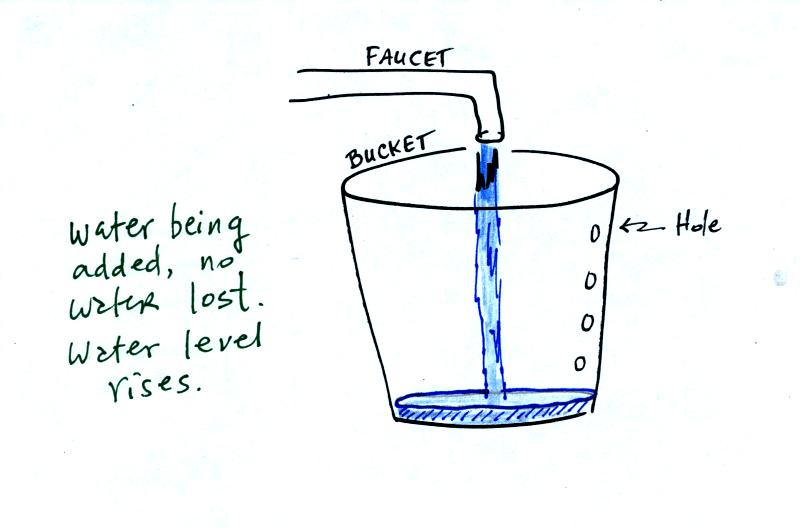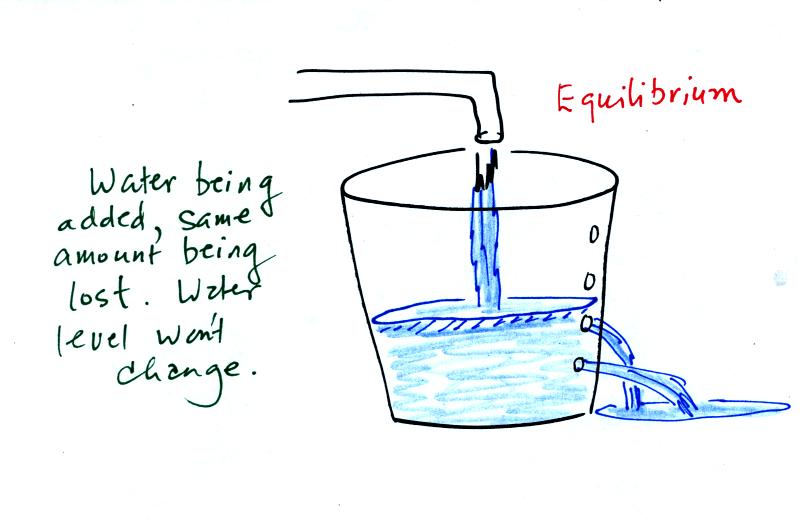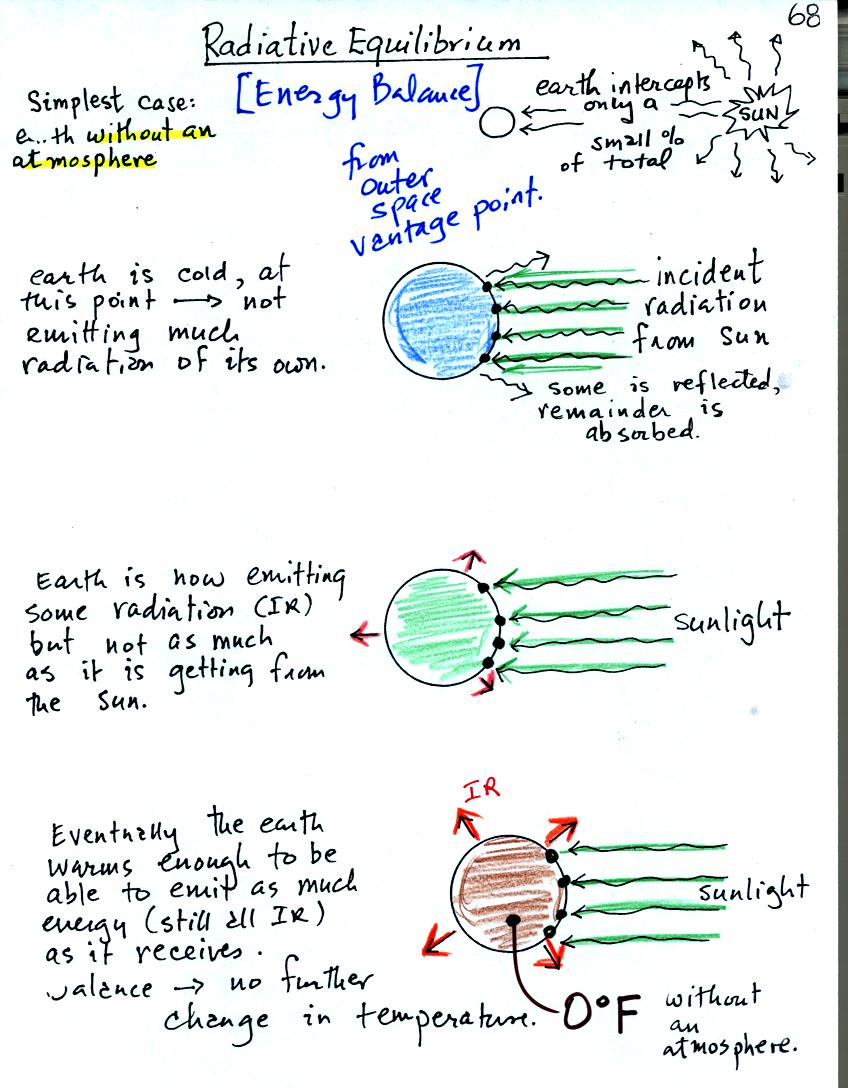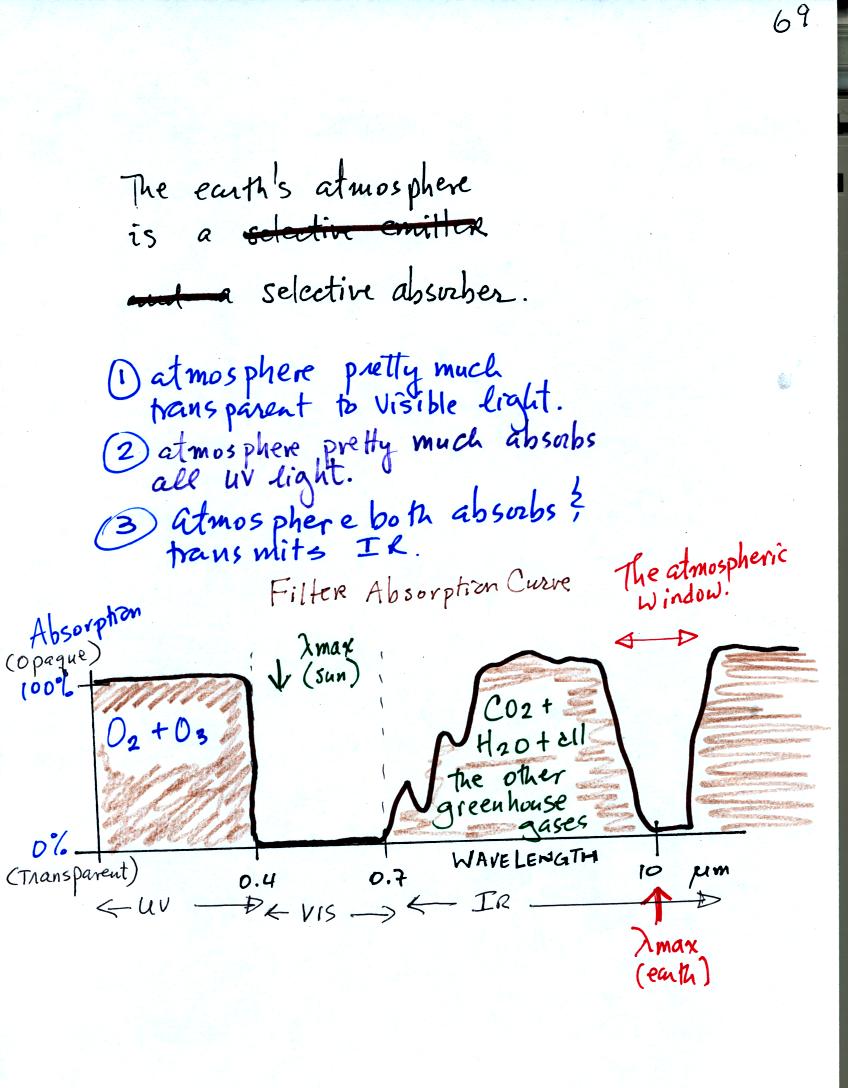Friday Oct. 6, 2006
More problems have been added to Optional
Assignment #3. The assignment is now complete and is due at
the beginning of class on Monday. You can either print out the
assignment or turn in your answers on a separate piece of paper.
There is a new 1S1P assignment. It is
complicated, be sure to read the instructions carefully.
We'll get
a better understanding of how the atmospheric greenhouse effect works
today. Though the greenhouse effect is subtle; if you're not
watching for it you'll miss it.

This figures compares the EM radiation emitted by the earth and
the sun. First
because the sun (surface of the
sun) is 20 times hotter than the earth a square meter of the sun's
surface emits energy at a rate that is 160,000 times higher than the
earth. Lambda max for the sun is 0.5 micrometers, green
light. The sun emits more green light than any other kind of
light. The sun doesn't appear green because it is also emitting
lesser amounts of violet, blue, yellow, orange, and red - together this
mix of
colors appears white. 44% of the radiation emitted by the sun is
visible light, 49% is IR light, and 7% is ultraviolet light.
100% of the light emitted by the earth is invisible IR light. The
wavelength of peak emission for the earth is 10 micrometers.
Now we're
almost ready to learn about radiative equilibrium. That's just
another word for energy balance. Before doing so here's an
analogous situation.
Radiative
equilibrium is like:
adding water to a leaky bucket

Water is being added to the bucket. No water is
being
lost
so the water level rises.

The water level has reached a hole in the side of the
bucket.
Water is being lost though not as quickly as water is being
added. The water level slowly rises some more.

Now the water is being added and lost at equal
rates. The
water
level won't change. This is a condition of equilibrium.
Instead of adding water to a bucket we will add energy to the earth.

Energy balance on the earth without an
atmosphere. The earth (shaded blue) starts out very cold and is
not emitting
any EM radiation at all. It is absorbing sunlight however so it
will
warm. Once the earth starts to warm it will begin to emit EM
radiation, though not as much as it is getting from the sun (the
slightly warmer earth is now colored green).
Eventually it will warm enough that the earth (now shaded brown) will
emit the same amount
of energy (though not the same wavelength energy) as it absorbs from
the sun. This is radiative equilibrium. The temperature at
which this occurs is 0 F (on the earth without any atmosphere).
That is called the temperature of radiative equilibrium.
Before we move to the more complex situation of radiative equilibrium
on the earth with an atmosphere, we need to learn something about how
gases in the atmosphere affect different kinds of light that passes
through the atmosphere.

This is a slightly simplified representation of the
filtering effect of
the atmosphere on UV, VIS, and IR light (found on p. 69 in the
photocopied notes, a more realistic version is reproduced on p.
70). 0% absorption means the atmosphere behaves like a window
made of clear glass, the air is transparent to light. The light
can
pass freely through the atmosphere. 100% absorption on the other
hand
means the atmosphere is opaque to light, it blocks the light by
absorbing it.
In our simplified representation oxygen and ozone make the atmosphere a
pretty good absorber of UV light The atmosphere is pretty nearly
perfectly
transparent to VIS light (we can check this out with our eyes, we can
see through the air, it is clear). Greenhouse gases make the
atmosphere a
selective absorber of IR light - it absorbs certain IR wavelengths and
transmits others.. Note "the atmospheric window"
centered at 10 micrometers. Light emitted by the earth at this
wavelength will pass through the atmosphere. IR light emitted by
the earth at slightly different wavelengths will be absorbed by
greenhouse gases. It is this ability of H20, CO2,
etc to
selectively absorb certain wavelengths of IR light that is responsible
for the greenhouse effect.
Here's
another look at radiative equilibrium on the earth without an
atmosphere. Here we're looking at the situation from a vantage
point on the ground. In the previous case we were looking at the
earth from a point in outer space.

Two units of sunlight arriving at the earth and being
absorbed at the
ground are balanced by 2 units of IR radiation emitted by the
earth. It is the fact that there are equal amounts of energy
being
absorbed and emitted that tells you this is radiative
equilibrium. Balance occurs when the earth's temperature is 0 F.
Now the figure we have all been waiting for, energy balance on the
earth with an atmosphere.

1. First there are 2 units (2 arrows) of
sunlight energy
arriving at the top of the atmosphere. We assume that all of this
is transmitted by the atmosphere and gets absorbed at the ground.
We'll see how realistic this is next Tuesday.
2. The ground is emitting 1 unit of IR radiation at a wavelength that
is
transmitted by the atmosphere. Radiation that falls in the
atmospheric window region centered at 10 micrometers perhaps.
3. The ground emits an additional 2 units of radiation at slightly
different wavelengths that are absorbed by greenhouse gases in the
atmosphere. IF it weren't for these greenhouse gases this energy
would have gone into space.
At this point you might wonder how can the ground emit 3 units of
energy when it is only getting 2 from the sun. The energy balance
diagram isn't finished yet, when it is finished we'll see that there
isn't a problem.
4. The atmosphere is absorbing two units of IR radiation (radiation
that
was emitted by the earth). To be in energy balance the atmosphere
must also emit 2 units of IR light. ONe is emitted upwards into
space, the other downward toward the ground.
Down at the ground now we see that we are now in energy balance.
The ground gets 2 units of energy from the sun + 1 unit from the
atmosphere. This balances the 3 units that are being emitted by
the ground.
Now an important observation. The ground is emitting 3
units. If you look back at the picture of energy balance on the
earth
without an atmosphere you would see that the ground was only emitting 2
units. The ground in that example had a temperature of 0 F.
In this example, the ground must be warmer in order to be able to emit
3 units of radiation. The ground temperature in this case is
nearer to 60 F.
In both pictures of radiative equilibrium (with and without the
atmosphere) there were 2 units of incoming sunlight. In the case
of the earth without an atmosphere the earth emitted 2 units of energy
back into space. In case with an atmosphere the ground is warmer
and emits 3 units. It can get away with this because some of what
it emits is absorbed by the atmosphere. The atmosphere in turn
emits radiation and some of this heads back to the ground. This
is the greenhouse effect. Greenhouse gases absorb some of the
energy emitted by the earth (that would otherwise be lost) and return
some that energy back to the ground.








